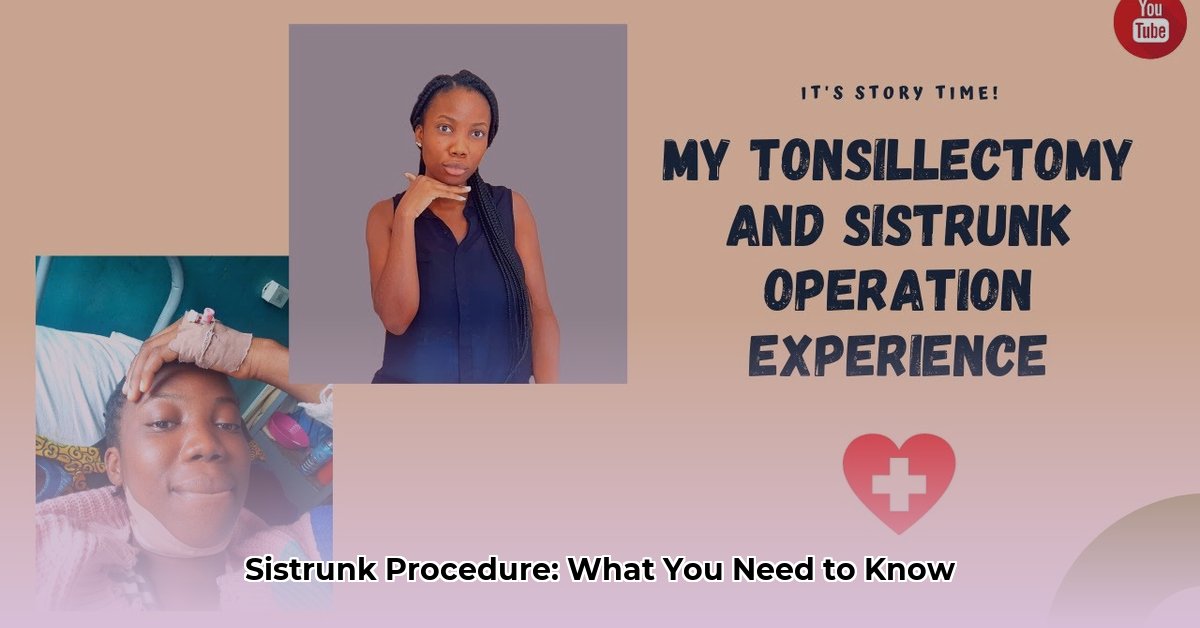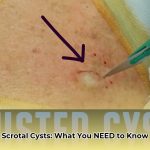What is the Sistrunk Procedure?
The Sistrunk procedure is the gold-standard surgery for treating thyroglossal duct cysts (TDCs). This guide provides a clear, step-by-step explanation of the procedure, recovery process, potential risks, and how to find a qualified surgeon. It’s designed to empower you with the knowledge you need to feel confident and informed.
Understanding Thyroglossal Duct Cysts
During fetal development, the thyroid gland migrates from the base of the tongue to its final position in the neck. The path it travels is called the thyroglossal duct. This duct usually disappears after birth. However, sometimes a portion remains, potentially forming a TDC.
A TDC is a small, fluid-filled sac, typically located near the Adam’s apple. While usually harmless, TDCs can sometimes become infected, causing pain, swelling, redness, and difficulty swallowing. In rare cases, a TDC might form an opening on the skin (fistula) that drains fluid.
Why is the Sistrunk Procedure Necessary?
While draining a TDC is possible, it’s often a temporary solution. The cyst is likely to refill because the underlying cause hasn’t been addressed. The Sistrunk procedure removes the entire cyst, a portion of the hyoid bone (a small U-shaped bone above the Adam’s apple), and the thyroglossal tract. This comprehensive approach significantly reduces the risk of recurrence, making it the most effective treatment.
Sistrunk Procedure Steps: A Detailed Look
The Sistrunk procedure generally follows these steps (variations exist, such as the Koempel method):
-
Incision: A small, horizontal incision is made in the neck, usually directly over the cyst, designed to minimize visible scarring.
-
Cyst Dissection: The surgeon carefully separates the cyst from surrounding tissues and structures.
-
Hyoid Bone Removal: A small section of the hyoid bone connected to the cyst is removed. This step is crucial for reducing recurrence.
-
Thyroglossal Tract Excision: The entire thyroglossal tract, connecting the cyst to the base of the tongue, is meticulously removed.
-
Incision Closure: The incision is closed with sutures, which may dissolve over time or require removal.
The Koempel Method: A Precise Approach
The Koempel method, a specific Sistrunk technique, adds these refined steps for enhanced precision:
-
Subplatysmal Flap Creation: A small flap is created in the platysma muscle (a thin muscle under the skin) to improve access to the cyst.
-
Strap Muscle Adjustment: Minor adjustments to the strap muscles in the neck may be made for better visibility and to protect surrounding structures.
-
Suprahyoid Dissection: The area above the hyoid bone is meticulously cleaned to remove any remaining cyst tissue.
-
Core-Out Procedure: A core of tissue behind the hyoid bone is removed to eliminate any potential microscopic tracts connected to the cyst.
-
Pharynx Repair (If Needed): In rare cases, a small nick in the pharynx (part of the throat) might occur and will be repaired immediately.
Recovery and Post-Operative Care
After the Sistrunk procedure, most patients go home the same day or after an overnight stay. Expect some swelling, bruising, and mild discomfort at the incision site. Pain medication can help manage any pain.
- Diet: You’ll likely start with a liquid diet, gradually progressing to soft foods as you heal.
- Activity: Normal activities can typically be resumed within a week or two, but avoid strenuous activity or heavy lifting for several weeks.
- Wound Care: Keep the incision clean and dry, following your surgeon’s instructions for dressing changes.
- Drains: A small drain might be placed under the skin to remove excess fluid and is usually removed within a day or two.
- Follow-Up: Attend all scheduled follow-up appointments to monitor healing and address any concerns.
Potential Risks and Complications
While generally safe, the Sistrunk procedure, like any surgery, carries potential risks:
- Bleeding: Though rare, bleeding can occur during or after surgery.
- Infection: Infection at the incision site is possible. Signs include increased pain, redness, swelling, drainage, or fever. Contact your surgeon immediately if you experience any of these.
- Recurrence: While the Sistrunk procedure has a low recurrence rate (less than 3%), there’s still a slight chance the cyst might return.
- Nerve Damage: There’s a small risk of damage to nearby nerves, such as those controlling the vocal cords. This is rare, especially with an experienced surgeon.
- Seroma: Fluid buildup under the skin (seroma) can occur but usually resolves independently.
Finding a Qualified Surgeon
Selecting a board-certified otolaryngologist (ENT) or head and neck surgeon with extensive Sistrunk procedure experience is essential. Your primary care physician can offer recommendations, and you can also check with reputable hospitals. Don’t hesitate to ask potential surgeons about their experience and success rates.
Frequently Asked Questions (FAQs)
- How long does the surgery take? Typically one to two hours.
- Will the scar be noticeable? The scar is usually small and fades over time.
- When can I return to work/school? Most people return within a week, but this can vary.
- What are the signs of infection? Increased pain, redness, swelling, drainage, or fever. Contact your surgeon if you experience any of these.
- What’s the long-term outlook? Excellent, with a high success rate and low recurrence risk.
Ongoing Research and Future Directions
Ongoing research is exploring refinements to the Sistrunk procedure, such as minimally invasive techniques like the transoral endoscopic vestibular approach (TEVAS), which is performed through the mouth. TEVAS potentially offers the benefit of no visible neck scar, but it requires a specially trained surgeon and isn’t suitable for all cases. Some surgeons also utilize a modified Sistrunk procedure (mSis), which may involve not removing the foramen cecum (a small pit at the base of the tongue). While early data suggests comparable outcomes to the full Sistrunk, more research is needed. These advancements underscore the importance of discussing all available options with your surgeon to determine the best approach for your individual needs.
Disclaimer: This information is for educational purposes only and does not replace professional medical advice. Consult a healthcare professional for any concerns about a thyroglossal duct cyst.
- Hydro Extrusions USA Leads North American Aluminum Profile Solutions - December 28, 2025
- Hydro North America Leads Aluminum Extrusion Solutions Across Diverse Industries - December 27, 2025
- Hydro Extrusion North America Provides Custom Solutions Across Diverse - December 26, 2025
















